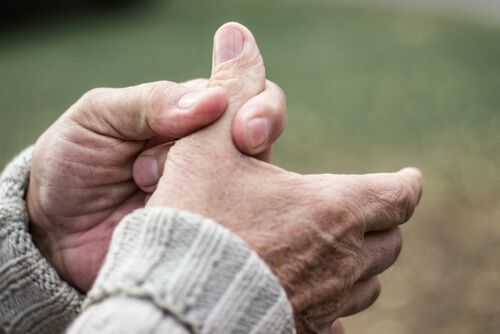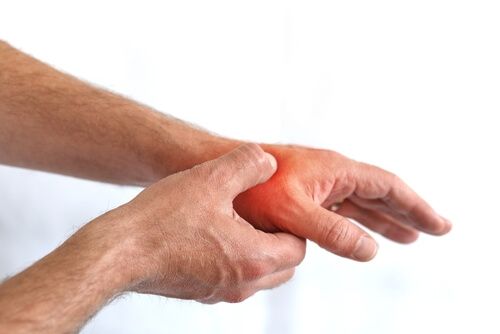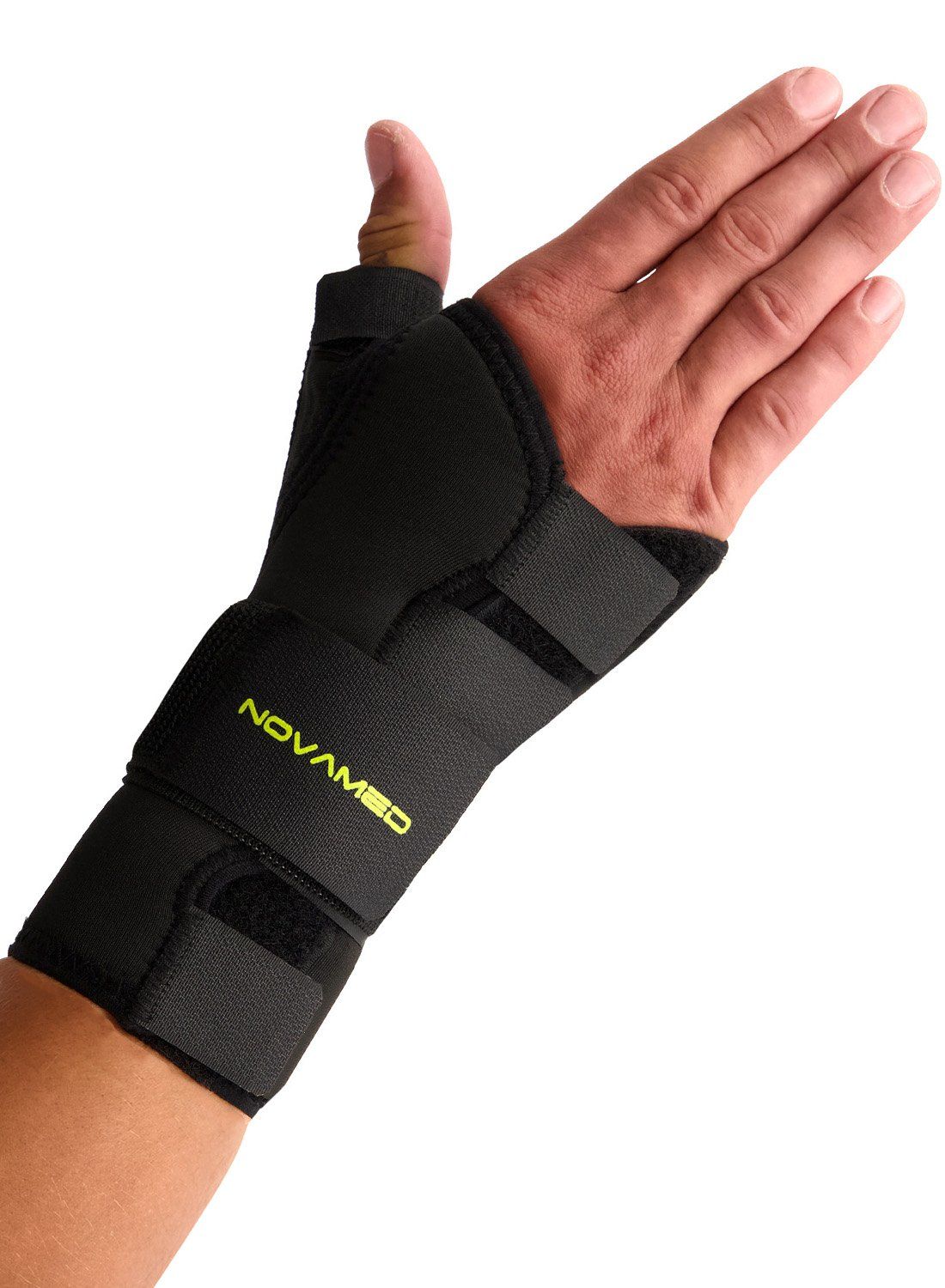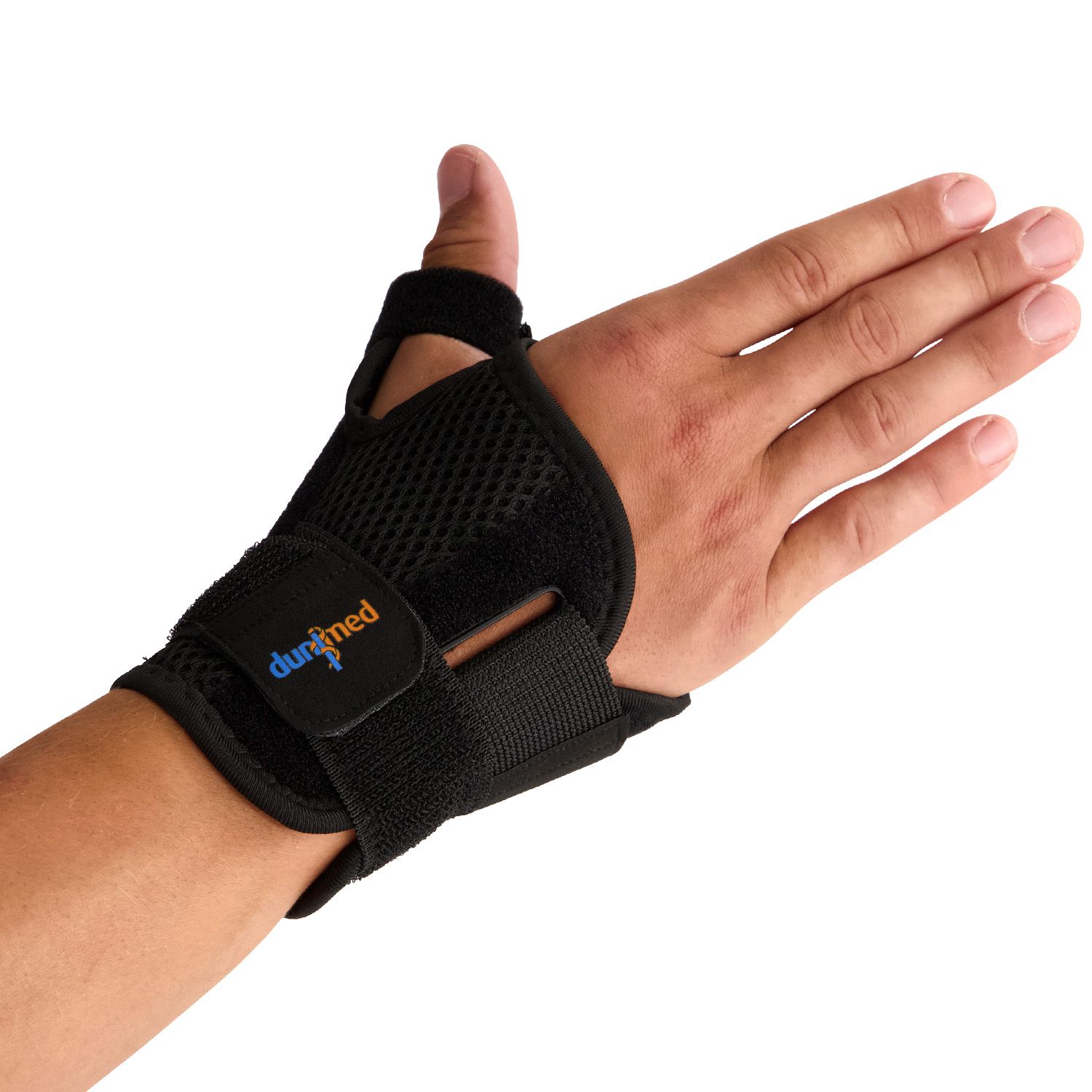Osteoarthritis Thumb
How does osteoarthritis in the thumb develop?
The bone ends of the hand and finger joints are covered with a layer of cartilage, which ensures that the bone parts can glide smoothly past each other. Osteoarthritis of the hand occurs when this layer of cartilage starts to wear down and becomes rough and irregular. This complaint is caused by long-term overloading of the hand joints, injuries to the hand joints, or an autoimmune disease. The thumb is the most frequently used part of the hand and is therefore highly sensitive to wear and tear. The base joint of the thumb, which is formed by the first metacarpal and a carpal bone in the wrist, is where most osteoarthritis occurs.

What are the symptoms of osteoarthritis of the thumb?
Stiff and painful joints are the main symptoms of thumb arthrosis. This may worsen stressed and strain, especially in the morning when getting up. This is also called starting pain. These symptoms usually subside within half an hour. Wear and tear of cartilage is often accompanied by inflammatory reactions. In response, extra bone tissue can grow at the edge of the affected joints. These bone protrusions are clearly visible in the fingers, as the fingers take on a knuckle-like appearance. Patients who suffer from this will have reduced stretching and strength in the fingers. The main symptom is a nagging pain at the base of the thumb. The pain increases with pinching movements, such as unscrewing a lid or opening a lock. These symptoms may also occur when writing.
Who is at increased risk of getting osteoarthritis of the thumb?
This condition is more common in women than in men. The complaints often arise after the age of forty. Previous injuries to this joint, such as a fracture, increase the risk of osteoarthritis.

How is osteoarthritis of the thumb diagnosed?
The doctor or specialist can use a physical examination to determine whether there is wear in the thumb joint. During the physical examination, a lump is often felt. Or a grinding sensation can be felt when the bones rub against each other. If there is still any doubt, an X-ray can always provide a conclusive answer.
Which treatment is necessary?
In the case of incipient thumb osteoarthritis, the doctor will try as far as possible to treat the wear without surgery. He will try to combat the pain and inflammation and slow down the wear and tear process. This is done by injecting and prescribing anti-inflammatory medication. In cases of thumb osteoarthritis, a support brace may also be applied. This ensures less pain and less wear and tear. This is a sturdy plastic bandage that relieves the thumb. Podobrace has various products for this purpose, such as a thumb brace. In case of advanced complaints, various surgical techniques can be applied. For example, it may be decided to replace the affected joint with an artificial joint. Or the small carpal bone can be removed. After the operation, you will have to follow hand therapy for a few weeks to regain full mobility.

Bauerfeind ManuLoc Rhizo Wrist / Thumb Support
Protection level 3
Novamed Thumb Support / Wrist Splint

Super Ortho Thumb Support CMC

Dunimed Premium Thumb / Wrist Support

Dunimed Manu Thumb Support

Dunimed Thumb / Wrist Support (in Black and Beige)

Gladiator Sports Thumb / Wrist Support

- Physiotherapist
- Sports podiatrist
- Manual therapist
- Podopostural therapist
- Myofascial dry needling specialist


